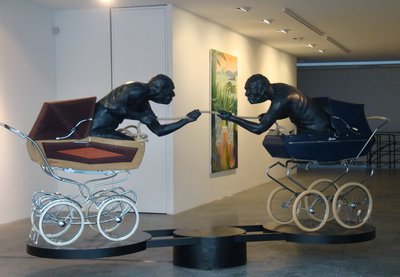Two years ago while doing the research for Istanbul The Ultimate Guide one of the parts of the city that most set my pulse racing was, rather unexpectedly, Karaköy. Karaköy is one of those places you tend not to notice, a transit point where you’re always hopping in and out of the tram and either striding down to the ferry terminal or rushing across the road to the funicular so that you barely take in the signs of fading grandeur all around you. If you do happen to look up it’s generally to notice a couple of fine buildings that seem to have strayed from nearby Bankalar Caddesi, and that’s about it. The narrow streets just inland from the Kadıköy ferry have a very workaday feel to them. They’re places where you ease yourself round men perched on the kerb to drink their tea and where you often need to back up to make room for service vehicles struggling to perform three-point turns in spaces never designed for such manoeuvres. Only slowly does it dawn on you not only that there are as many churches squeezed into the streets here as there are off İstiklal Caddesi but that they belong to a bewildering kaleidoscope of Christian sub-divisions too.
Strolling around the back streets today I was struck again by all these churches, the only conspicuous one being the one we all notice as we swish by in the tram, namely the large and exhaust-fume-blackened Surp Krikor Lusavoriç (St Gregory the Illuminator). Modelled on a famous church at Echmiadzen in Armenia, this building tries its damnedest to look old although it only really dates back to 1966. A door beneath the bell-tower leads into the church which is usually open to visitors during the day, which is a lot more than can be said of the even filthier Surp Hisus Pırgiç (Jesus Christ the Saviour) church across the road near the St Benoit High School. Just as the cast-iron church of St Stephen beside the Golden Horn served as the headquarters of the Bulgarian Exarchate after it broke away from the Greek Patriarchate in nearby Fener, so this forgotten church was the headquarters of the French-speaking Armenian Catholics who had broken away from their co-religionists in the original church on the site of Surp Krikor to join communion with the church in Rome.
That was as nothing to a second schism that occurred in Karaköy. In narrow Ali Paşa Değirmen Sokak, running parallel to the waterfront, you’ll find the Church of Meryemana (the Virgin Mary), originally a Greek Orthodox church that was requisitioned to serve as the headquarters of the Turkish Orthodox Church. Yes, there actually is such a thing although its existence says more about politics than religion. The “church” was founded in 1922 as a breakaway from Greek Orthodoxy in the immediate aftermath of the Turkish War of Independence and it has now been led by four patriarchs, all from the same family that has somehow become embroiled in the Ergenekon furore. You can usually snatch a look at the narthex of the church and its courtyard which is studded with old Greek gravestones but the “Ne Mutlu Türküm Diyene (How Happy is He Who Can Call Himself a Turk)” banner defiantly rubs salt into an old wound. A little further down the road the locked church of Aya Nikola was occupied by the same sect although it no longer boasts even the minuscule congregation of St Mary’s.
Perhaps it’s just as well that Karaköy’s other churches keep themselves to themselves, hunkered down on the rooftops, of all places, so that they’re most easily discovered from a distance when you catch a glimpse of their natty little domes. These churches belong to the Russian Orthodox congregation who built them as chapels for the hostels they used when on pilgrimage to Mt Athos. Erected in the late 19th century, they were busiest between 1920 and 1924 when White Russians poured into İstanbul to escape the Bolshevik Revolution, coincidentally just as the Turkish Orthodox congregation was getting itself bedded down around the corner. Services still take place at St Pantaleimon church on Sundays. Climb to the sixth floor of the block on Hoca Tahsin Sokaği and you’ll find the crowded chapel bright with modern murals and icons. More elegant is St Andrei’s on Galata Mumhanesi Sokaği whose walls are adorned with hundreds of images of the saints set against a cobalt background. You’ll have to be much luckier to catch it open though as it’s mainly used for private ceremonies.
I ended my walk beside the Kılıç Ali Paşa Cami whose stonework and lead domes glisten after their recent cleaning. Work on restoring the hamam is still ongoing, and nothing at all has been done to the crumbling medrese. Give it time though. Karaköy may look pretty down-at-heel for the time being but gentrification is pressing in from all sides. Just steps away from the mosque I stopped dead in my tracks at a vision of what looked like two elderly men facing off against each other from rotating prams. Of course it was an artwork on display in artSümer, a flashy new gallery in an old warehouse that looks as if it has escaped from Boğazkesen Caddesi just up the road in Tophane.
Written: 2011




2 Comments
Turkish Orthodox Church is open on Sundays around 10:30, service at 11:00. Outsiders are allowed, but please show respect and keep voices low, so that they don’t decide to keep out the general public. Also, no photos, even before the service.
The inside is fascinating, crammed with icons.
Don, thanks so much for that helpful info on when to see inside the church.
Sorry for delay in response (!) – system to notify me of comments was turned off…